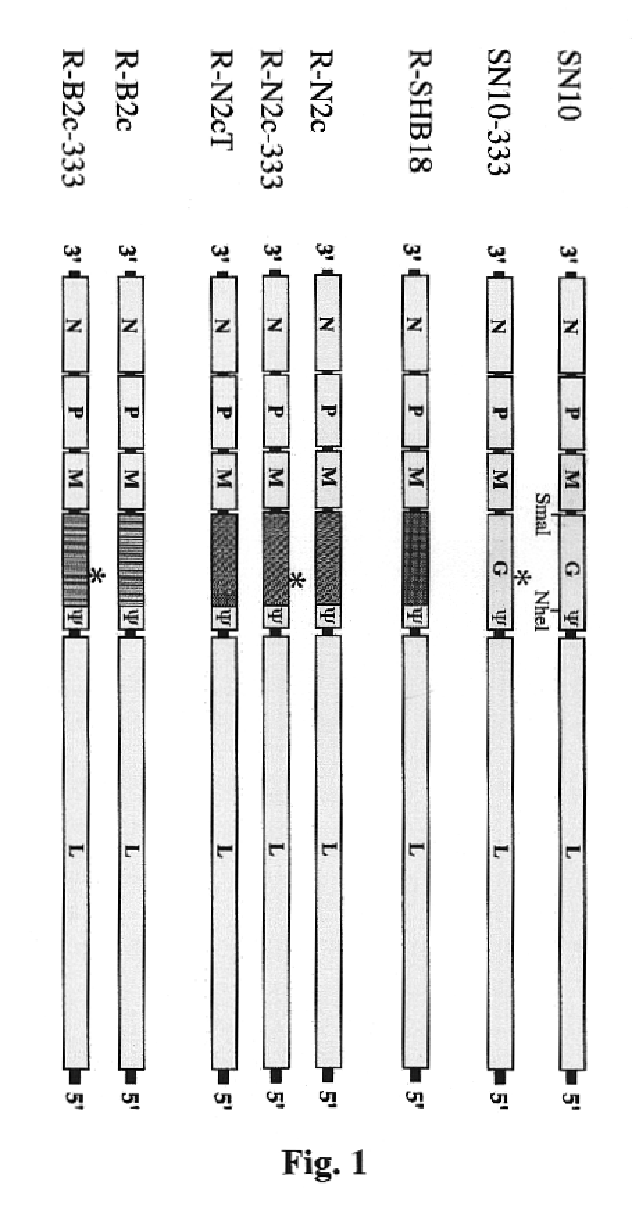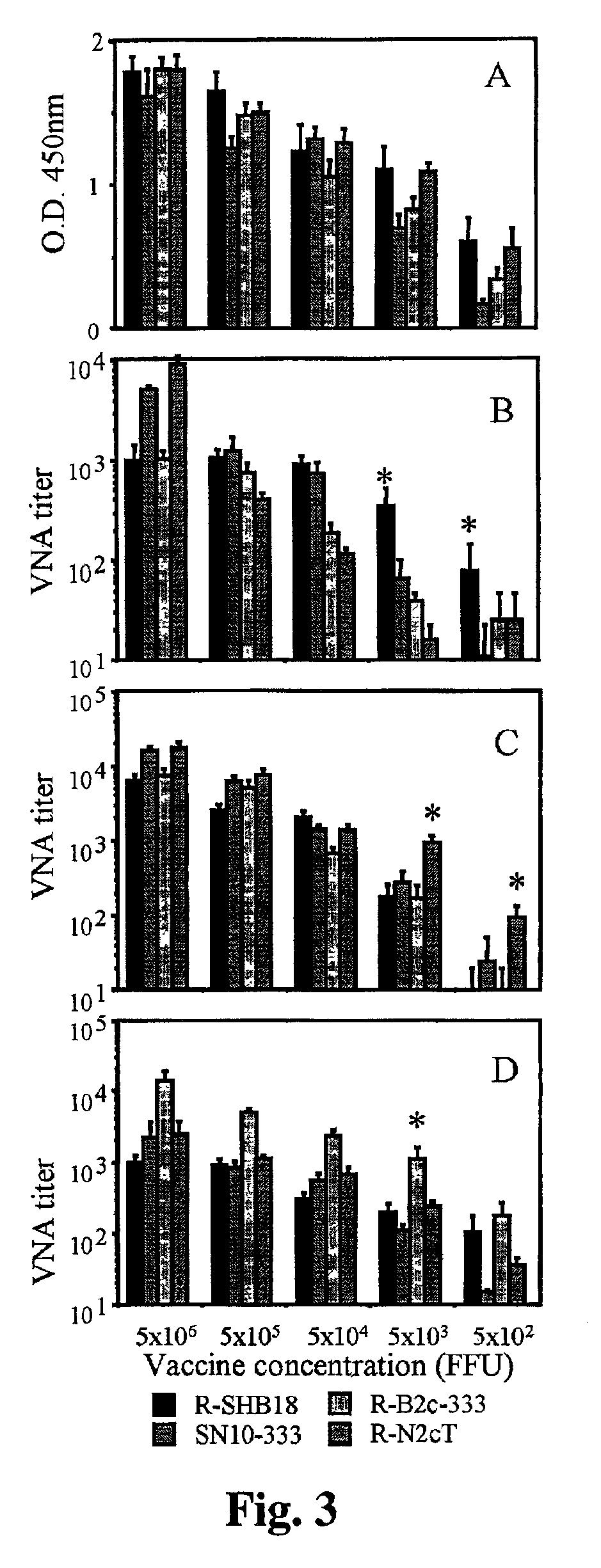Genetically engineered rabies recombinant vaccine for immunization of stray dogs and wildlife
a rabies virus and recombinant technology, applied in the field of biotechnology and immunology, can solve the problems of cellular dysfunction and ultimately death, rabies is a worldwide public health problem, and the outcome is almost always fatal, and achieve the effects of slowing down the uptake of rabies virus, accelerating apoptosis, and enhancing immune respons
- Summary
- Abstract
- Description
- Claims
- Application Information
AI Technical Summary
Benefits of technology
Problems solved by technology
Method used
Image
Examples
Embodiment Construction
Materials and Methods
Viruses.
[0031]CVS-N2c is a hghly pathogenic and CVS-B2c a less patogenic subclone of the mouse-adapted CVS-24 rabies virus. (Morimoto, K., et al., Proc. Natl. Sci USA 95:3152-3156, 1998). The recombinant rabies viruses SPBN, SN-10, and SN10-333 are generated from a SAD B19 cDNA clone as described elsewhere. (Schnell, M. J., et al., Proc. Natl. Acad. Sci. USA 97:3544-3549, 2000; Schnell, M. J., et al., EMBO J. 13:4195-4203, 1994; Morimoto, K., et al., Vaccine in press, 2001).
Development of Recombinant Virus Vaccines for the Oral Immunization of Dogs, Raccoons, and Skunks
[0032]Preliminary data obtained from mouse protection experiments demonstrated great variations in the protective activity of recombinant rabies virus vaccines against infection with particular rabies challenge viruses. Since the potency of a recombinant vaccine can increase as much as 16-fold if the antigenic structures of the G proteins of the vaccine virus and the challenge virus are identical,...
PUM
| Property | Measurement | Unit |
|---|---|---|
| area | aaaaa | aaaaa |
| acceleration of apoptosis | aaaaa | aaaaa |
| polarity | aaaaa | aaaaa |
Abstract
Description
Claims
Application Information
 Login to View More
Login to View More - R&D
- Intellectual Property
- Life Sciences
- Materials
- Tech Scout
- Unparalleled Data Quality
- Higher Quality Content
- 60% Fewer Hallucinations
Browse by: Latest US Patents, China's latest patents, Technical Efficacy Thesaurus, Application Domain, Technology Topic, Popular Technical Reports.
© 2025 PatSnap. All rights reserved.Legal|Privacy policy|Modern Slavery Act Transparency Statement|Sitemap|About US| Contact US: help@patsnap.com



